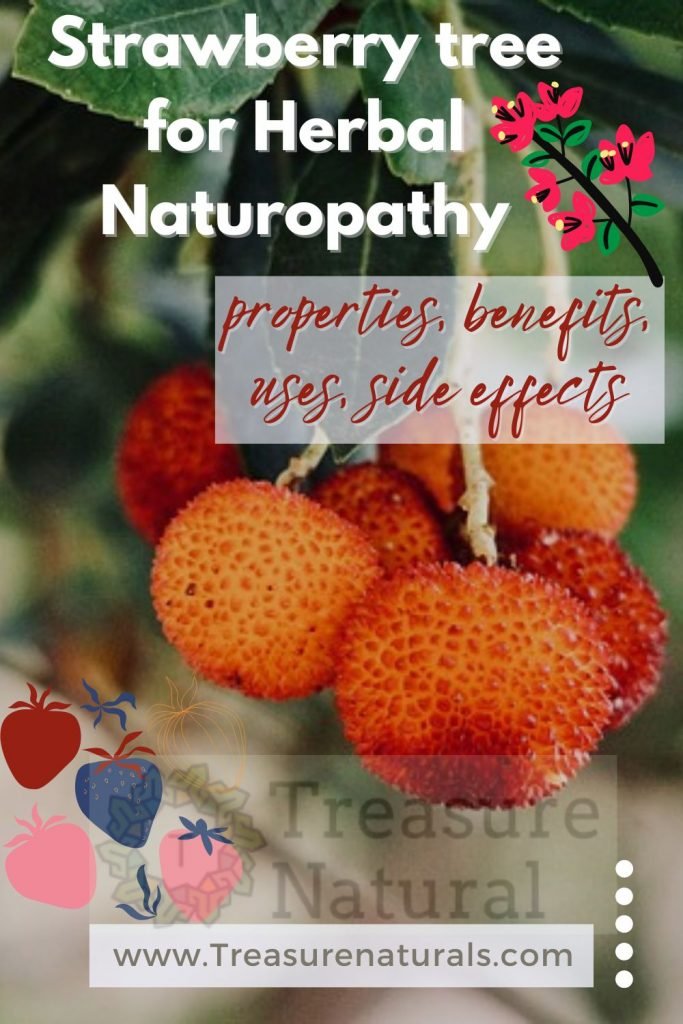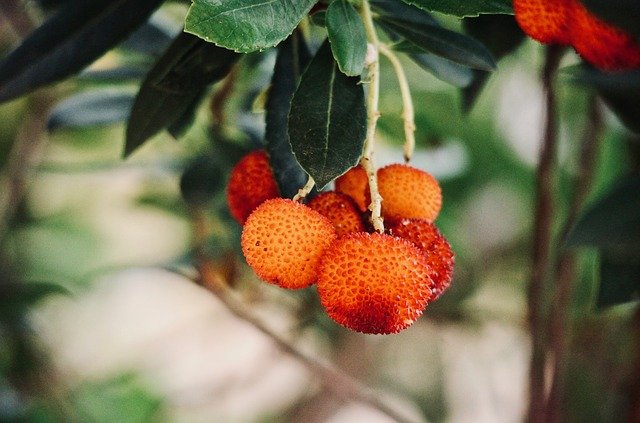
Strawberry tree has antiseptic and anti-inflammatory properties and is used to treat cystitis and prostatitis. Let’s find out how leaves, roots and fruits are used.
The strawberry tree ( Arbutus unedo ) is a plant belonging to the Ericaceae family. It is useful against cystitis and prostatitis due to its disinfectant, anti-inflammatory and astringent action.
Properties of the strawberry tree
The strawberry tree has properties:
- antinseptics
- anti-inflammatory
- analgesics
- astringents
The beneficial properties of strawberry tree are given by the presence of arbutin (also contained in bearberry ), methylbutin, hydroquinone and tannins, contained in the leaves, roots and fruits.
What is strawberry tree good for?
The herbal properties of strawberry tree make this remedy useful in case of urogenital tract infections, such as prostatitis and cystitis. In this second case, however, we usually prefer bearberry, whose arbutin content is higher. The root and leaves are traditionally used to treat diarrhea, due to the astringent properties given by the presence of tannins.
How to use
Internal use
- Infusion : it is prepared with 10 grams of fresh leaves infused in a liter of hot water. The strawberry tree herbal tea is consumed throughout the day.
- Mother tincture : obtained by macerating the fresh plant in alcohol. Approximately 40 drops diluted in a glass of water are administered twice a day between meals.
- Fruit : the fruits of the strawberry tree can be eaten fresh or candied or used to prepare jams. They are also used in alcohol, to make drinks or (once fermented) strawberry tree wine.
- Honey : strawberry tree honey, known for its bitter taste, appears to have anti-allergic and anti-asthma properties.
Contraindications of the strawberry tree
The strawberry tree is considered a safe remedy but its use is not recommended during pregnancy , breastfeeding and children. Given the high content of tannins, it can irritate the gastrointestinal tract. Those undergoing drug therapy should pay particular attention because there is a risk of interaction with medicines.
Description of the plant
The strawberry tree is a small tree or shrub typical of the Mediterranean scrub, very long-lived.
There are several varieties of strawberry tree : Arbutus unedo, the most common, which can reach five meters in height; the Arbutus unedo ‘Atlantic’ , more compact in shape; and finally the Arbutus unedo ‘Rubra’ , with white and pink flowers.
The strawberry tree plant is usually an evergreen bush with leathery, toothed leaves along the edges of a beautiful bright green. The flowers are small, white or greenish, gathered in clusters and rich in nectar. The fruit is a roundish edible berry, red or orange, with a warty surface.
Strawberry trees or strawberry trees are edible autumn fruits that are eaten in various ways, but what does the strawberry tree taste like? Undoubtedly it is particular, sweetish but acidulous. The name unedo alludes to this because it means “I only eat one”. Excessive consumption can have even mild hallucinogenic effects, comparable to those of being drunk.
The fruits of the strawberry tree are however eaten fresh or in syrup, alone or in fruit salad, or used to prepare jams and jellies and other recipes with the strawberry tree.
Habitat of the strawberry tree
The shrub that loves the Mediterranean scrub and siliceous soils rather than limestone. It is at home among chestnut trees, holm oaks and myrtles and rarely grows above 1,000 meters.
In Italy it is typical of traditional gardens especially in Tuscany but we can also see it along the coasts of Tunisia, the Canaries, Morocco and even Ireland.
Cultivation of the strawberry tree
The strawberry tree plant can be grown in the garden and in pots for ornamental purposes.
The strawberry tree tolerates heat well and withstands cold temperatures down to -5 ° C. It can be successfully cultivated both in the regions of Central and Southern Italy and in the North, placing it in a sunny position and in an acid, siliceous and arid soil.
Irrigation must be regular from spring to autumn and can be suspended during the winter, especially if the plant is grown in the ground. Beware of stagnant water, which could damage the root system. From spring to the end of summer it is also necessary to fertilize the soil every two or three weeks, especially if the plant is growing in pots.
The pruning of the strawberry tree is not necessary; it is carried out only to eliminate damaged or dry branches or to reduce their encumbrance.
Curiosity

The strawberry tree is called the Garibalbi plant because the leaves are green, the flowers are white and the fruits are red, just like the flag of Italy. In the United Kingdom, on the other hand, they call it strawberry tree precisely because it resembles a tree full of strawberries.
Strawberry tree honey is a typical product of Sardinia, because this region offers an ideal climate for the growth of the plant. It is a very sought-after and rare honey because, with the cold and rains of late autumn, the bees do not go out much to forage. Given its delicious flavor, however, it is certainly a well-spent effort.






